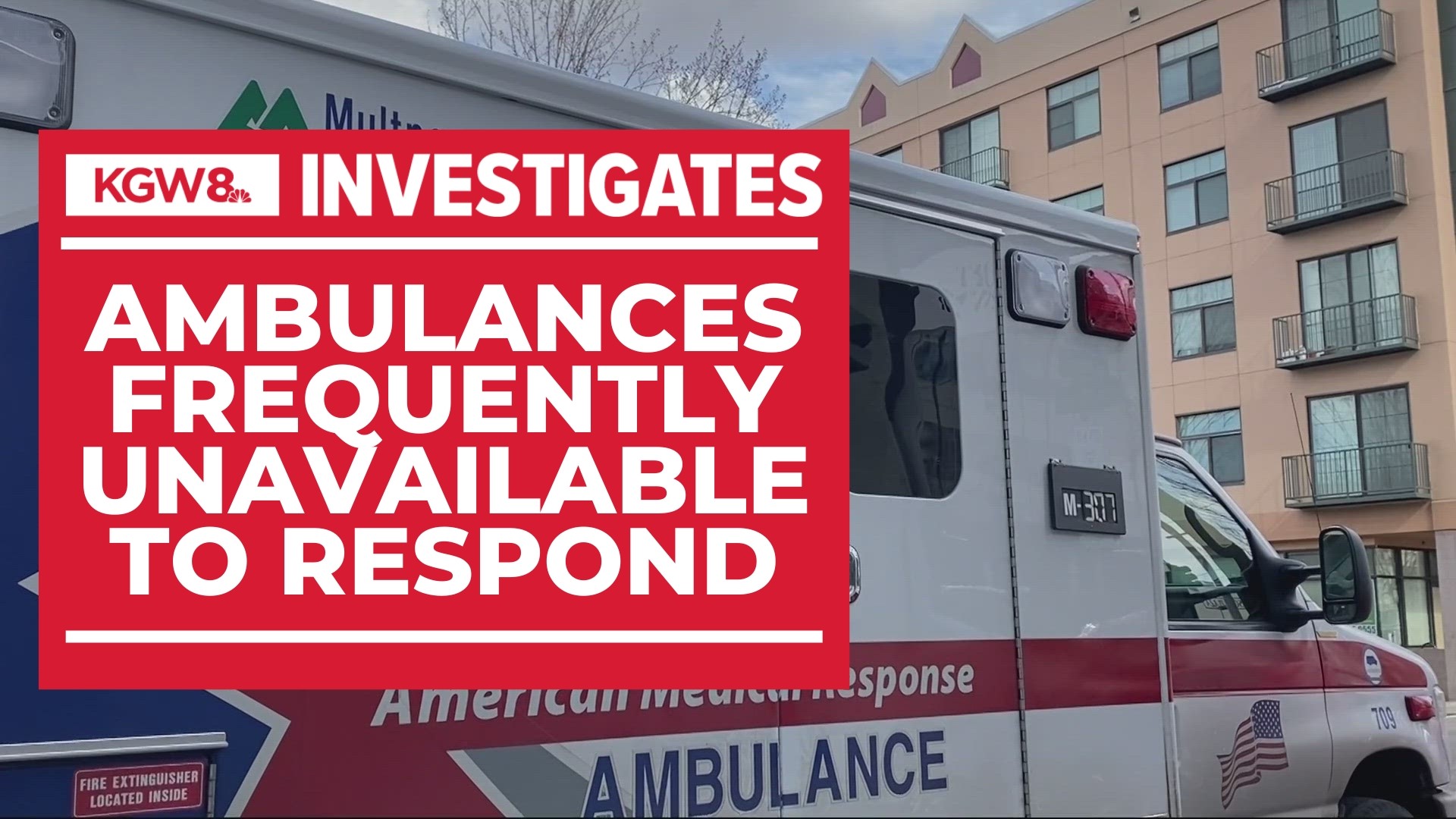MULTNOMAH COUNTY, Ore. — Ambulances in Multnomah County were unavailable to immediately respond to more than 6,300 emergency calls between January 17 and June 8, according to Bureau of Emergency Communications data.
The data reflects a surge in "Level Zero" incidents — code for when dispatchers have zero available ambulances that they can assign to respond to a 911 call.
It's the latest piece of evidence illuminating Multnomah County's chronic ambulance problem.
Ambulance crews — staffed by emergency medical services provider American Medical Response, or AMR, under contract with the county — have been arriving to emergencies later and later, frequently failing to meet county standards.
In May, a man in a wheelchair who'd been struck by a hit-and-run driver died in the street while waiting 32 minutes for an ambulance to arrive.
Multnomah County typically expects ambulances to arrive within 8 minutes to comply with county benchmarks.
AMR blames a shortage of paramedics and the county's commitment to a two-paramedic system.
Notably, the Level Zero data shows how frequently ambulance crews are overwhelmed — either through understaffing, high 911 call volume, delays while waiting in hospital bays or other factors.
“I think that this is a huge issue that I think everybody I know in government is really concerned about — how can we improve the system and what we can do," said Multnomah County Chair Jessica Vega Pederson in an interview with KGW. "So it's a big shared priority that we have."
When dispatchers don't have an ambulance available to send to an emergency, they use a Level Zero placeholder until the next ambulance is available.
KGW reviewed and clarified the data with BOEC analysts in recent weeks after initially requesting the information in early May, working to isolate individual Level Zero calls.
The data shows that, at times, 15 or more 911 calls received placeholders within an hour, reflecting a significant backup of emergency services with no ambulances becoming available for the next emergency call.
The BOEC data does not show how long it took for an ambulance to respond to each call for service.
"It's incredibly disturbing," Vega Pederson said. "I mean, I think all of us, if we were having some kind of family emergency medical emergency, we would want to pick up the phone and and be able to have an ambulance come to have a response."
Typically in Level Zero situations, and increasingly for 911 calls in general, firefighter crews arrive to the scene of the call first to provide initial assessment and treatment.
However, fire crews generally don't transport patients for hospital care, so firefighters and patients together are forced to wait until an ambulance becomes available.
So far, Vega Pederson and Multnomah County have not penalized AMR for the slow response times and thousands of Level Zero cases.
The county received 50,025 emergency calls between Jan. 1 and May 31, 2023 — averaging out to about 10,000 calls per month.
When compared to the number of Level Zero incidents logged, that would mean ambulances were unavailable on dispatch for about 10% of medical emergency calls.

